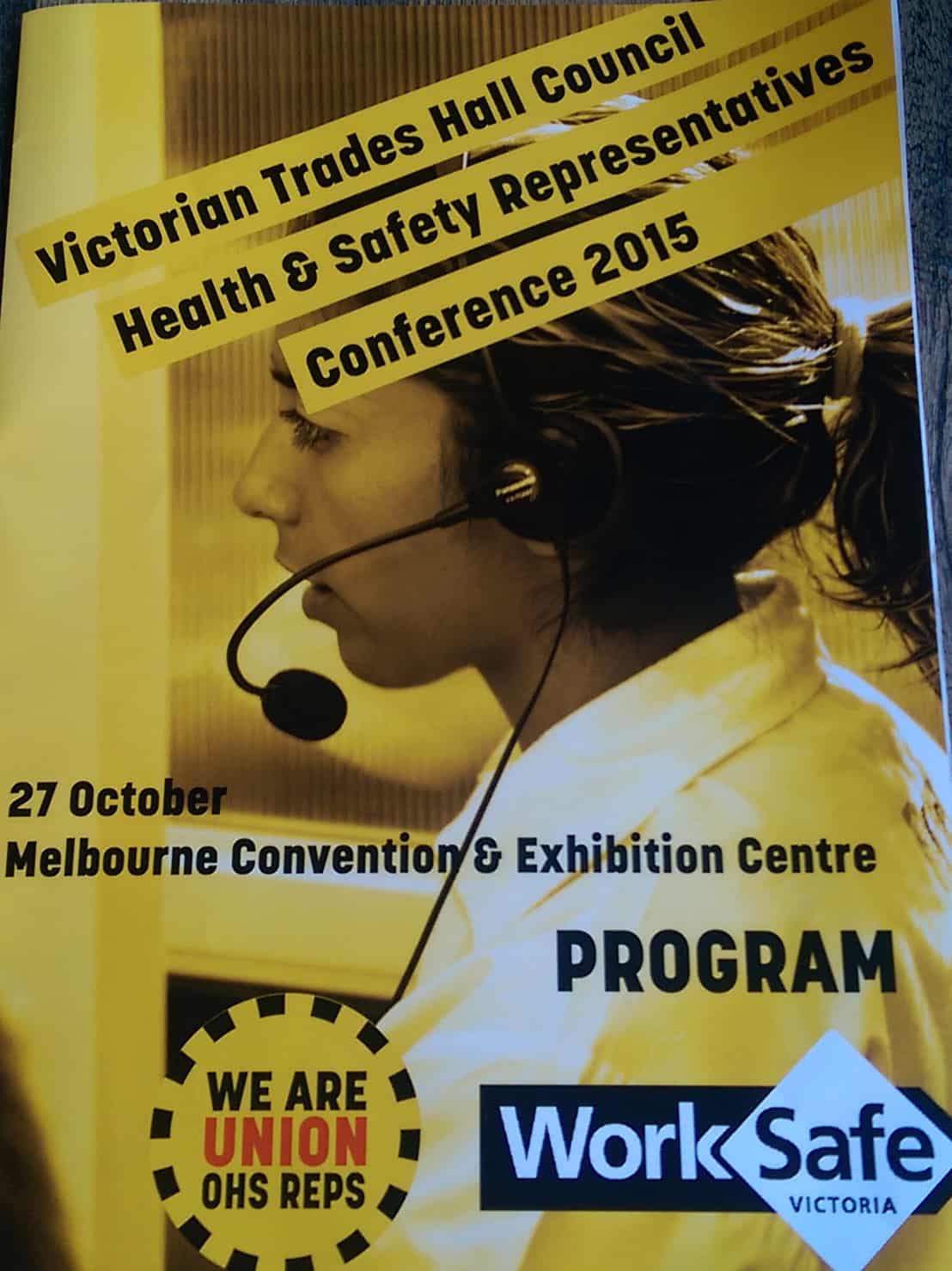 The Health and Safety Representatives’ Conference, organised by the Victorian Trades Hall Council as part of Victoria’s WorkSafe Week, was notable for the lack of politics. Previous conferences have often focussed on political campaigns such as Your Rights At Work but this was largely absent from the presentations. There were some political questions from the floor but that was expected.
The Health and Safety Representatives’ Conference, organised by the Victorian Trades Hall Council as part of Victoria’s WorkSafe Week, was notable for the lack of politics. Previous conferences have often focussed on political campaigns such as Your Rights At Work but this was largely absent from the presentations. There were some political questions from the floor but that was expected.
The conference had some particular highlights relevant to the broader Occupational Health and Safety (OHS) profession.
